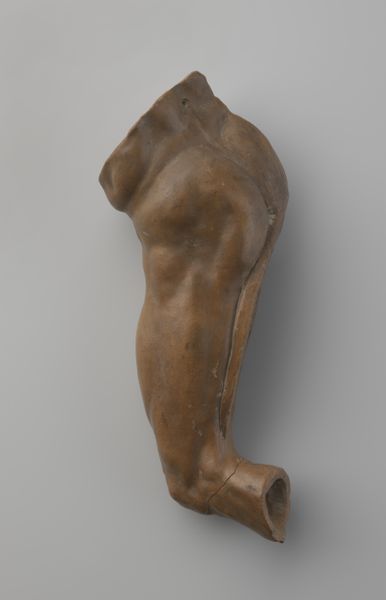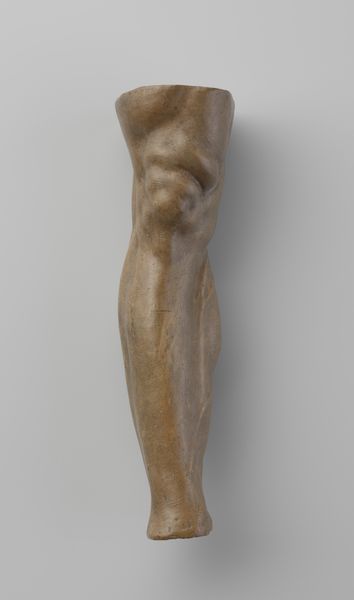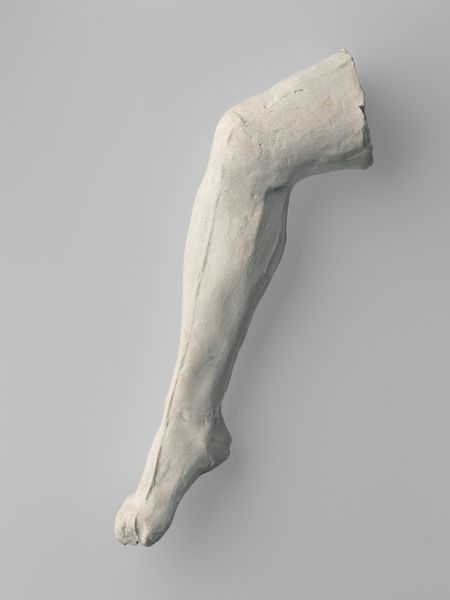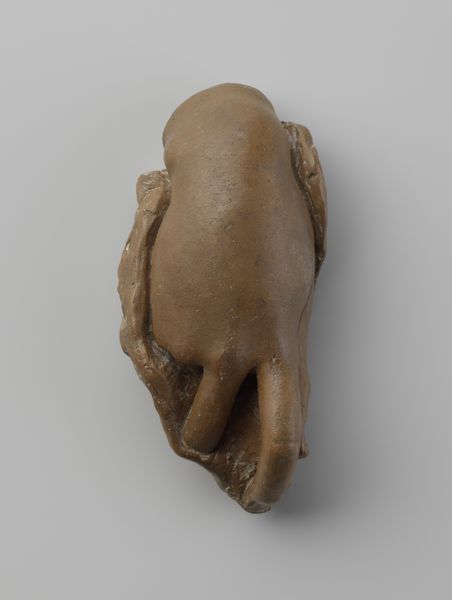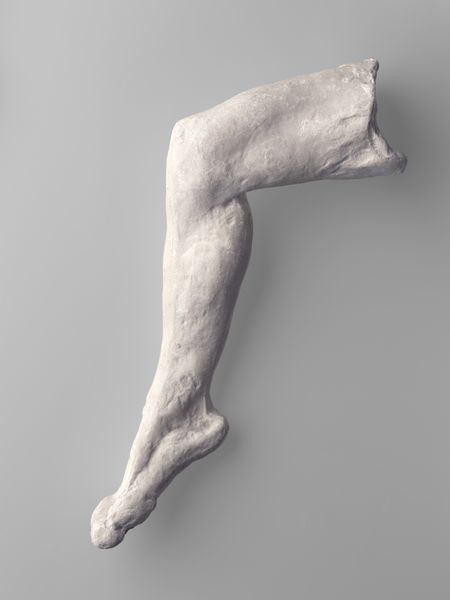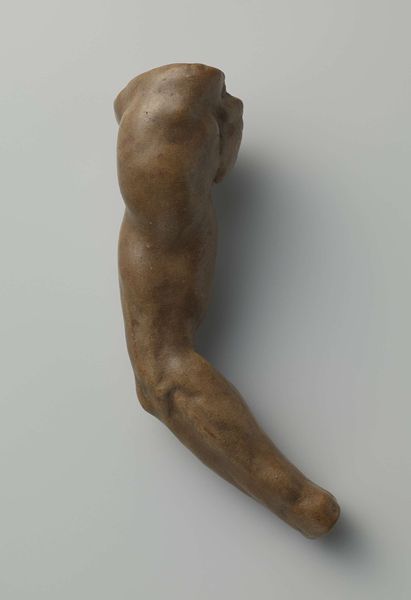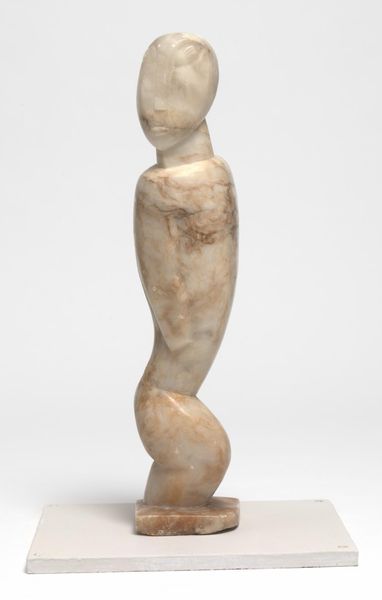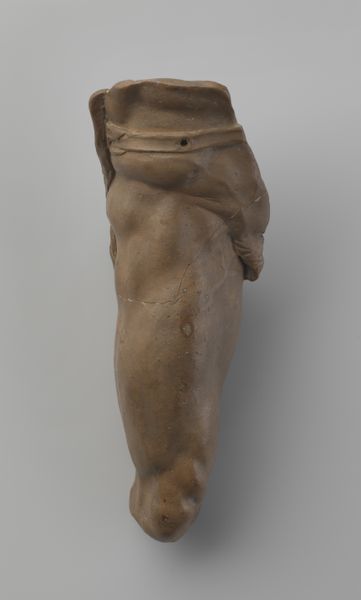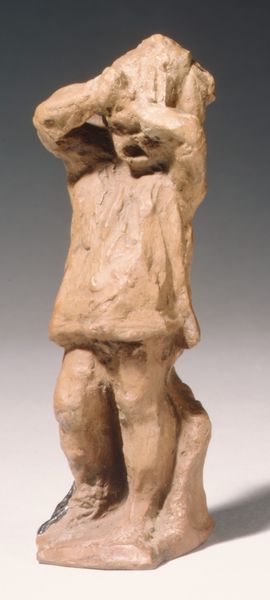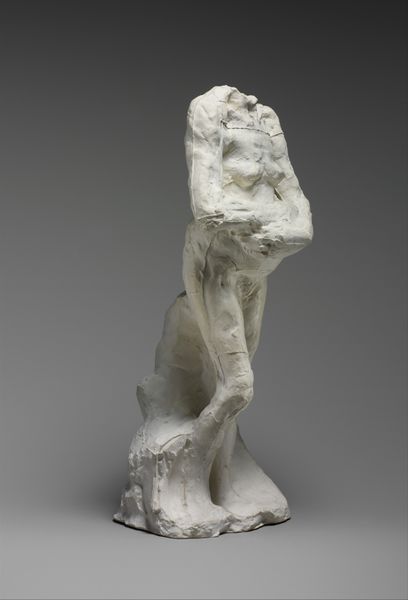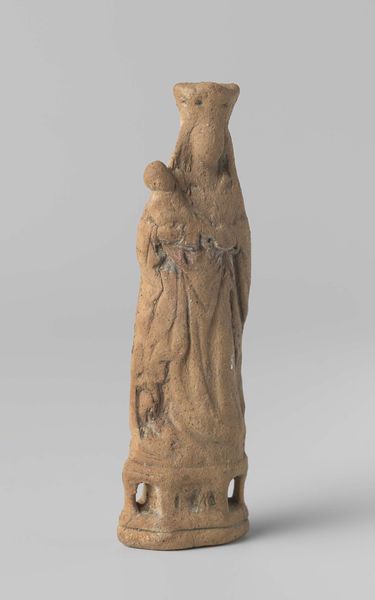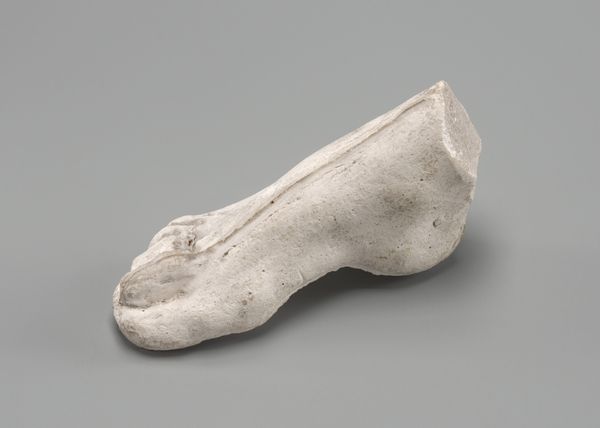
sculpture, marble
#
portrait
#
11_renaissance
#
sculpture
#
marble
Copyright: Rijks Museum: Open Domain
Curator: Let's take a look at Johan Gregor van der Schardt's "Study Models of Parts of the Body," created before 1570. It's currently held at the Rijksmuseum. What's your initial impression? Editor: It feels…incomplete. The leg is clearly defined, the muscles taut and lifelike. But the blunt truncation is jarring. The materiality of the marble adds to that feeling of fragmented reality. Curator: Precisely. The artist used marble to render a singular portion of the body, effectively distilling its aesthetic and structural elements for observation. Consider how the line of the calf muscle flows uninterrupted down to the subtly arched foot; it showcases the ideal classical form. Editor: I'm intrigued by the labor. The choice of marble requires intense physical effort and precision. Someone would have spent days, maybe weeks, just carving this single leg. It really highlights the physical exertion inherent in the creation process, the very real connection between human effort and art. Curator: Yes, the medium of marble has the cultural connotation of high art, yet here it’s serving almost a didactic purpose. We can consider the social role of the artist during the Renaissance. Artists' studios were like workshops, and the accessibility of artwork became more important than its previous, exclusive accessibility. Editor: Were these models part of some larger anatomical study? The break at the thigh suggests it was intended to be incorporated somehow. Curator: Undoubtedly. We might even posit its utility in other sculptures that were made during the era; Schardt seemed particularly skilled at portraiture, where the subtleties of anatomy were paramount. Editor: Knowing that this piece was a study enhances my understanding of the processes behind finished sculptures. There is more interest for the labor than just aesthetic impact; it showcases practical techniques. Curator: A fascinating duality emerges—a demonstration piece and the work itself. A synthesis that expands on the notion of utility within the definition of fine art. Editor: I appreciate gaining that insight; thinking about this marble leg not only as a classical fragment but also as evidence of real human activity provides new perspective.
Comments
rijksmuseum about 2 years ago
⋮
This group of small models of parts of the body are carefully copied after famous sculptures, in particular by Michelangelo, in Florence and Rome. They came from the workshop of the Nijmegen sculptor Johan Gregor van der Schardt, who had a successful career in Italy, Nuremberg, and Copenhagen. They are extremely rare examples of the, in part autograph, study material of a 16th-century sculptor.
Join the conversation
Join millions of artists and users on Artera today and experience the ultimate creative platform.
